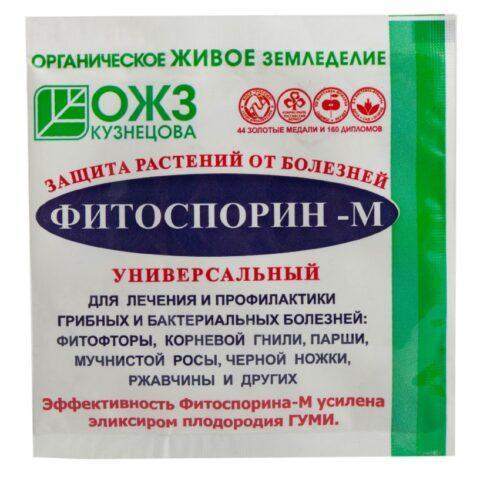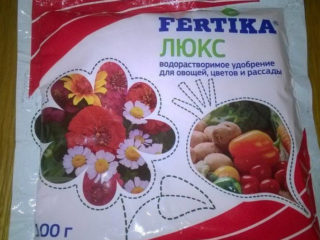Content
Beginning gardeners doubt whether Fitosporin is needed for currants. This product is widely used in agricultural technology, and its effect is not limited only to antimicrobial properties. Proper use of the drug will allow you to get a good harvest and prevent the death of the bush.
Is it necessary to water currants with Fitosporin?
Any shrub needs protection from fungi and microbes. Even varieties with strong immunity suffer from diseases under unfavorable conditions. Fitosporin is a new generation drug with a wide range of capabilities.
Operating principle
The product can be used not only to prevent, but also to get rid of diseases such as bacteriosis, septoria, and aphids. It also successfully copes with blackleg and resectoniosis.

Seeds, roots and currant berries can be treated with Fitosporin
In nature, Fitosporin is a mixture of living spores and cells, bacteria strain 26D (bacillus subtilis). A similar composition applied to the bush makes it more frost- and heat-resistant.Additional components of Fitosporin:
- chalk to increase viscosity;
- nitrogen;
- potassium;
- brown coal;
- phosphorus;
- other additives at the discretion of the manufacturer.
Mechanism of action: spores with bacteria are in suspended animation. When added to water they begin to multiply. As a result of their activity, dangerous microflora reduces its activity or dies. A plant treated with Fitosporin has an enhanced immune system. Such currants grow and develop in a shorter time. Most gardeners use the drug as a fungicide and immunomodulator.
What pests and diseases does it help against?
Manufacturers guarantee that due to the use of Fitosporin, crop yields can increase by 20%. The drug effectively fights diseases such as fusarium rot, bacterial cancer, and helminthosporium rot. Fitosporin is not afraid of powdery mildew, leaf rust and other diseases.
How to use Fitosporin to process currants
Most manufacturers market several forms of the drug: powder, paste or aqueous emulsion. The dosage of the product and the speed of preparing the solution for work depend on the form. Please note that the paste mixes with water faster than the powder. But Fitosporin in liquid form is very easy to dilute. The effectiveness of the product remains virtually unchanged.
Currant processing should be carried out in calm weather. If rainfall is forecast, all work must be completed three hours before rain. You should not irrigate the bushes in the midday heat: the hay bacilli contained in Fitosporin may die from the abundance of light and high temperature.
It must be taken into account that the duration of action of Fitosporin depends on the form. General storage rules:
- room temperature not higher than +30 °C;
- Do not leave the bottle with the solution near medications and food;
- Place containers out of the reach of children and animals.
Powder
This form is effective both for the treatment of diseases and for the prevention of their occurrence. Fitosporin powder can be stored for a long time without losing its properties. Another advantage of this form is its ease of use: you can easily measure the required dosage and leave the remaining product for the next treatment. The shelf life is four years.
According to the instructions, the powder must be diluted 1-2 hours before starting work, and the finished solution should be stored for no more than six hours. As time passes, the properties of the substance will decrease. The disadvantage of this form is its poor solubility in water.

In 1 tsp. 3-3.5 g of Fitosporin powder is placed
Liquid
This form is already a working solution in high concentration. Liquid Fitosporin is most often recommended for irrigating currant leaves or its fruits. It should be borne in mind that manufacturers produce the solution in various concentrations so that it can be used to treat not only shrubs, but also flowers and trees. The medicine has a faint ammonia odor, which disappears after receiving the finished concentrate for use.
The standard dosage of liquid Fitosporin is ten drops per 100 ml of water. This concentrate is most often used to prevent the disease or to destroy the disease at an early stage. In case of severe damage to the crop, the drug should be diluted in a ratio of 1:2. The treatment must be repeated after ten days.

The drug based on Fitosporin-M is a Reanimator, it allows you to destroy the spread of the disease on currants
Paste
This form differs from others in that it contains a large amount of humus. It is thanks to this that the paste exhibits its properties longer than powder or liquid. The product is packaged in an airtight container. One of the advantages of the paste is its rapid dissolution in water.
But it should be borne in mind that this form is recommended for use only for preventive purposes and to strengthen the immune system. It is recommended to spray the bush with Fitosporin in the spring. If the currant has already been affected by a disease, then preference should be given to a powder or solution.
Another feature of this form is the method of application. Fitosporin paste should be diluted in two stages. First you need to prepare a mother solution, whose concentration will be high, and then a working solution. When diluted, Fitosporin retains its properties for six hours.
For the concentrate, you need to mix the paste and water in a ratio of 1:2. The final dosage of the drug for processing currants is 3 tsp. for 10 liters of water.

It is recommended to irrigate currant leaves and shoots with a ready-made solution of Fitosporin paste.
When to use Fitosporin for currants
The first treatment should be scheduled for spring. The drug is non-toxic and is not absorbed into plant tissue. Spraying currants with Fitosporin should be carried out from mid-May. Repeat the procedure twice a month throughout the growing season.
If the bush is damaged, the frequency of treatments and the concentration of the solution can be increased. If the gardener is sure that the effect is low, then the treatment can be supplemented with other drugs. It should be borne in mind that shrubs and soil must be treated before planting in the ground.
Consumption rates
There are no exact indicators, since the form of the preparation, the frequency of treatments per season, and the number of shrubs should be taken into account. For preventive purposes, the solution consumption is lower than for the treatment of diseases.
To improve the quality of biomass and destroy fungal spores, it is enough to dilute 30 mg of paste in 2 liters of water.
If signs of disease appear: falling ovaries, yellowing of foliage or drying out of shoots, it is recommended to spray the currants with a weak solution: 3 tsp. the drug in a bucket of water. You can irrigate both bushes and soil.
To restore the soil in spring and autumn, you need to stir 7.5 ml of paste in 5 liters of water. It is best to shed soil in the morning or evening, in calm weather.

To stimulate cutting growth, it is enough to dissolve two drops of Fitosporin in a glass of water.
Precautionary measures
Although Fitosporin is a natural drug that is not harmful to humans or currants, caution should be exercised when working with the product.
A substance that enters the esophagus can cause poisoning. The affected mucous membranes become irritated.The individual characteristics of the body should also be taken into account.
Containers for Fitosporin solution for processing currants should be plastic or enameled. Before work, a person must put on a respirator, goggles and a mask. You should not eat or drink during the procedure. After irrigating the currants, you should remove all clothes, take a shower, and wash all tools.
Compatibility with other drugs
It is advisable to use the prepared working solution immediately. Please note that paste concentrate has a longer shelf life than aqueous emulsion or powder mixed with liquid. =
Fitosporin for processing currants cannot be used simultaneously with alkaline compounds, as they neutralize beneficial microflora.
Products that can be used for complex processing:
- fungicides (Tilt Premium, Fundazol, Strobi, Quadris);
- insecticides (Aktara, Desis);
- fertilizers and growth regulators (Obereg, Zircon, Epin);
- antibiotics (Phytoflavin).
It is necessary to take into account the type of drug. Manufacturers often add additional components to Fitosporin that will serve as supplements.
Conclusion
Gardeners use phytosporin for currants everywhere. The drug has earned great popularity due to its natural composition, high efficiency and versatility of use. It is possible to process not only currants, but also other fruit and berry crops. To achieve maximum effect, you should not violate the dosage of the product and regularly irrigate the bush.







